Showing 1–16 of 23 results
-
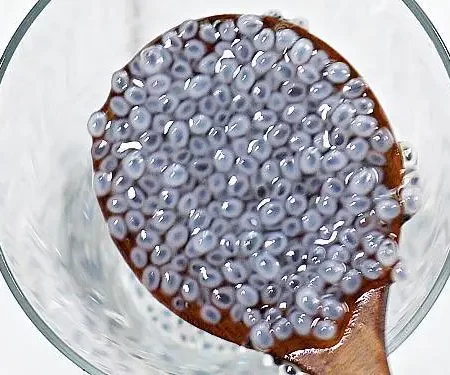
Basil Seeds
Basil seeds, also known as Sabja seeds or Tukmaria, are small black seeds derived from the basil plant (Ocimum basilicum). While they share a name with basil leaves, they come from a different species within the basil family. These seeds are popular in certain culinary and medicinal applications, particularly in Southeast Asian countries.
-
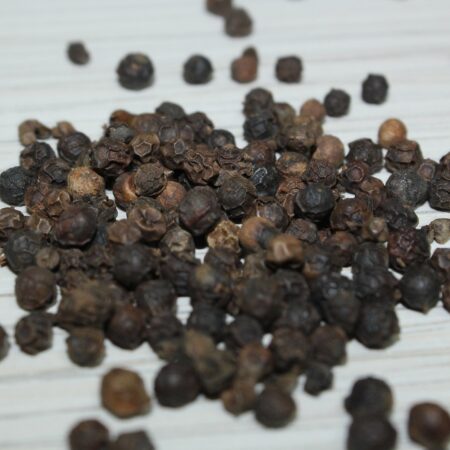
Black Pepper
Black pepper (Piper nigrum) is a widely used spice derived from the berries of the pepper plant. Native to India, black pepper has been used in cooking for centuries and is now cultivated in various tropical regions worldwide. The black pepper plant is a climbing vine that produces small, round berries known as peppercorns. These berries are harvested at different stages of maturity to produce various types of pepper, including black, white, and green. Black pepper is renowned for its pungent and slightly spicy flavour. The compound responsible for its spiciness is called piperine.
-
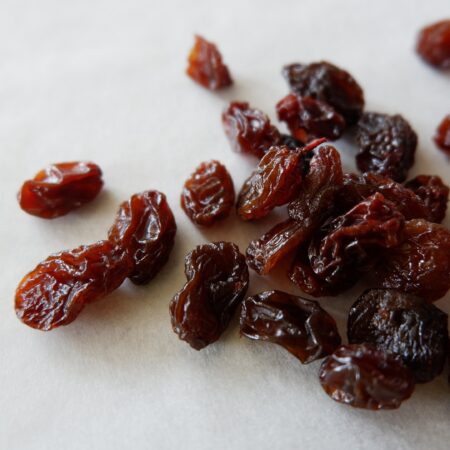
Black Raisins
Black raisins are dried, dark-coloured grapes that have undergone a drying process to remove most of their water content. Black raisins are typically made from dark-coloured grape varieties, such as Black Corinth or Dark Seedless grapes. The drying process concentrates their natural sugars, resulting in a sweet and flavourful dried fruit.
-
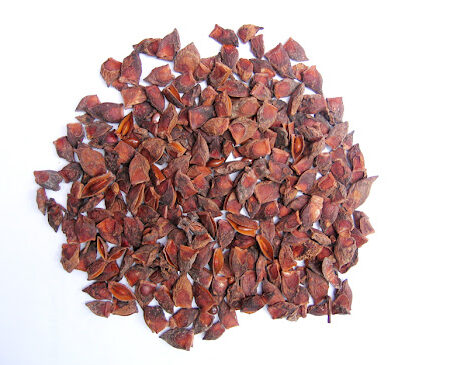
Broken Star Aniseeds
Aniseeds are the seeds of the star anise plant. Star anise comes from the fruit of the Illicium verum tree, native to China and other parts of Asia. It has a strong liquorice-like flavour and is often used as a spice in both sweet and savoury dishes.The fruit is star-shaped, with eight points, and each point contains a single seed. Star anise is a common ingredient in spice blends, soups, stews, desserts, and beverages like mulled wine.
-
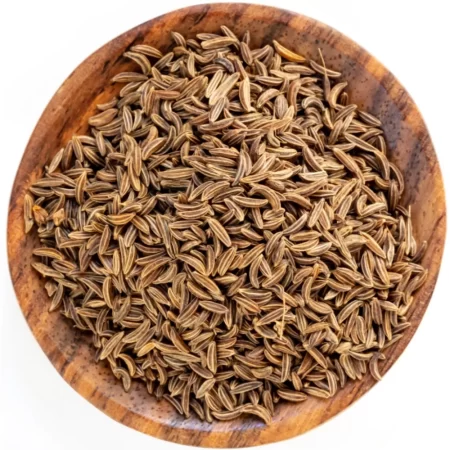
Caraway Seeds ( Sha Jeera)
Shahi Jeera, also known as Black Cumin Seeds, comes from the plant Bunium persicum, which belongs to the Apiaceae family. Shahi Jeera has a unique, earthy, and slightly sweet flavour, distinct from regular cumin seeds. It is often used to enhance the taste of various dishes. Commonly used in Indian and Middle Eastern cuisines, Shahi Jeera is employed in spice blends, rice dishes, curries, and bread. It adds depth and aroma to the food.
-
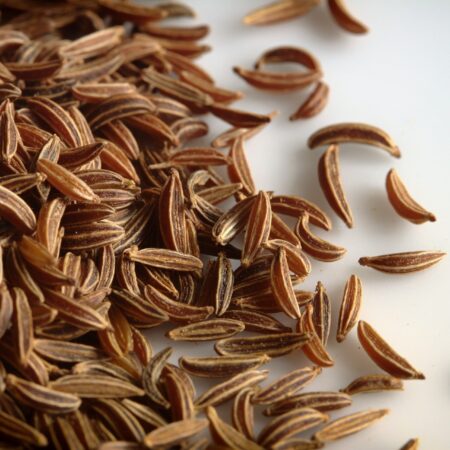
Caraway Seeds One
Caraway seeds come from the caraway plant (Carum carvi), which is a biennial herb belonging to the Apiaceae family. Caraway seeds have a warm, earthy, and slightly sweet flavour with a hint of citrus and anise. Widely used as a spice in cooking, caraway seeds are popular in European cuisines, particularly in Central and Eastern European dishes. They add depth to bread, sausages, stews, soups, and pickled vegetables. Caraway is a key ingredient in classic recipes like rye bread and caraway cabbage.
-
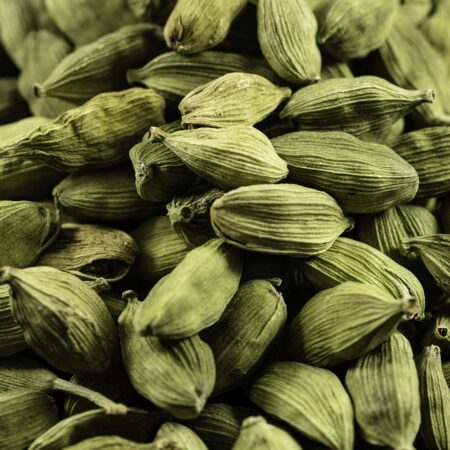
Cardamom
Cardamom is a highly aromatic spice derived from the seeds of plants belonging to the genera Elettaria and Amomum. Cardamom has a complex flavour profile that includes citrus, mint, and herbal notes. It adds depth and warmth to dishes. Cardamom is a versatile spice used in a variety of culinary applications. It is a key ingredient in many spice blends, such as garam masala, and is commonly used in desserts, beverages (like chai tea), curries, and rice dishes.
-
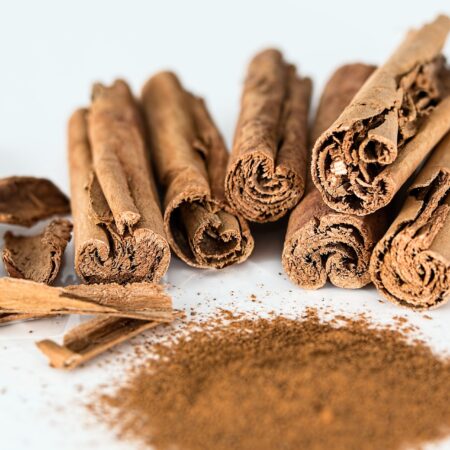
Cassia Broken(Cinnamon)
“Cassia Broken” is a term that may refer to pieces or fragments of Cassia cinnamon, a type of cinnamon derived from the bark of the Cinnamomum cassia tree. Cassia cinnamon is a variety of cinnamon that is commonly used in cooking. It has a strong, sweet, and slightly spicy flavour and is distinguishable from Ceylon cinnamon by its thicker and coarser barkCassia cinnamon typically comes in rolled sticks, but the term “Cassia Broken” suggests that the cinnamon may be in broken or fragmented form, rather than in whole sticks.
-
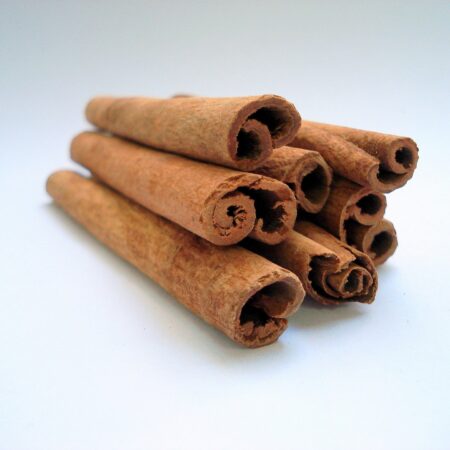
Cassia(Cinnamon)
Cassia, commonly referred to as Cassia cinnamon, is a type of cinnamon derived from the bark of the Cinnamomum cassia tree. Cassia cinnamon comes from the Cinnamomum cassia tree, primarily cultivated in China, Indonesia, and Vietnam. It is one of the main varieties of cinnamon. Cassia cinnamon has a strong, sweet, and slightly spicy flavour, distinct from the milder and sweeter Ceylon cinnamon. The bark of Cassia cinnamon is thicker and coarser compared to Ceylon cinnamon. It typically forms tight curls when rolled and has a reddish-brown colour.
-
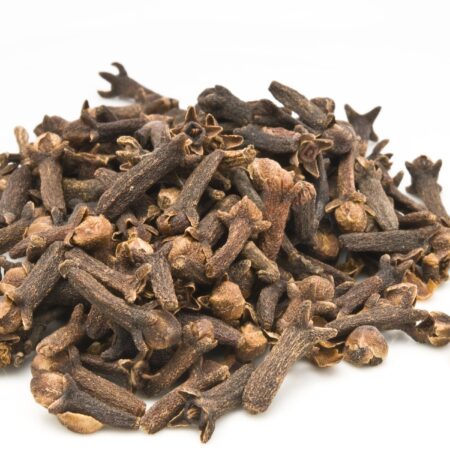
Cloves
Cloves are aromatic flower buds derived from the Syzygium aromaticum tree, native to the Maluku Islands in Indonesia.Cloves have a strong, warm, and sweet flavor with a hint of bitterness. They are one of the most aromatic spices.Cloves are small, dark brown, and nail-shaped buds. They are often used whole or ground in culinary applications.
-
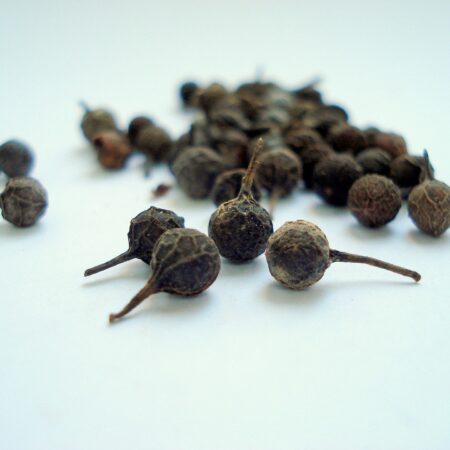
Cubebs
Cubebs, also known as Java pepper or tailed pepper, are the dried berries of the plant Piper cubeba. Cubebs come from the Piper cubeba plant, a climbing vine native to Java and other parts of Southeast Asia. Cubebs are small, dark brown berries with a distinctive “tail” or stem attached, resembling a tiny spiked ball. Cubebs have a unique flavour that is peppery, pungent, and slightly bitter. They are often described as having a more complex taste than regular black pepper.
-
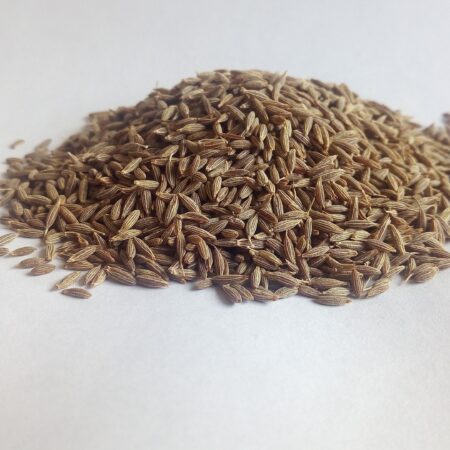
Cumin Seed Shah Jeera
Cumin Seed Shah Jeera” refers to a variety of cumin seeds often known as “Shahi Jeera” or “Black Cumin Seeds.”Shahi Jeera, or Black Cumin Seeds, comes from the plant Bunium persicum, a member of the Apiaceae family. Shahi Jeera has a unique, earthy, and slightly sweet flavour, different from regular cumin seeds (Cuminum cyminum). It adds depth and richness to dishes. Shahi Jeera is commonly used in Indian and Middle Eastern cuisines. It is a key ingredient in spice blends, rice dishes, stews, and curries, providing a distinct and aromatic flavour. The seeds are small, elongated, and dark brown, similar in appearance to regular cumin seeds but darker.
-
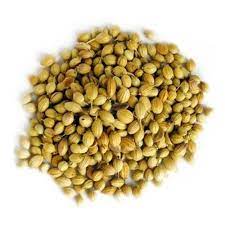
Dhana
“Dhana” is the Hindi term for coriander seeds. Dhana refers to the seeds of the coriander plant (Coriandrum sativum), which is a member of the parsley family. Coriander seeds have a citrusy, slightly sweet, and earthy flavour. They are different in taste from coriander leaves, also known as cilantro. Dhana is a versatile spice used in various cuisines worldwide. It is a common ingredient in spice blends, curries, soups, stews, and pickles. Additionally, coriander seeds are often roasted and ground to enhance their flavour.
-
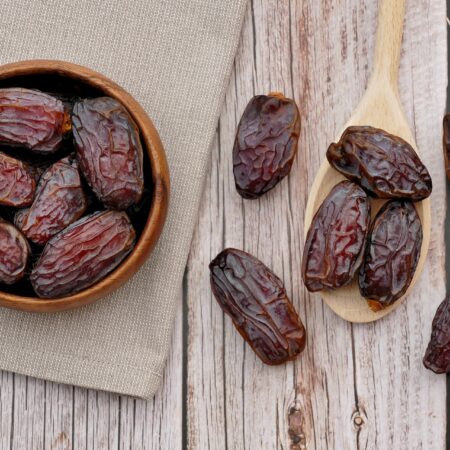
Dry Dates
Dry dates are simply dates that have undergone a drying process to remove most of their water content. Dry dates are dried varieties of dates, which are the fruit of the date palm tree (Phoenix dactylifera). Dates are typically dried naturally in the sun or through mechanical drying methods, resulting in a reduced moisture content. Dry dates are wrinkled, darker in colour, and have a chewy texture compared to fresh dates. They are often smaller in size than their fresh counterparts.
-
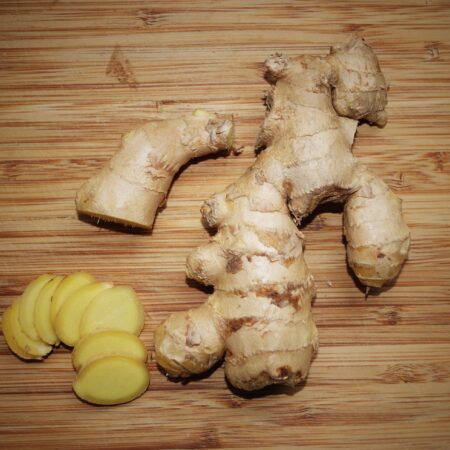
Dry Ginger
Dry ginger, also known as dried ginger or ginger powder, is derived from the rhizome of the ginger plant (Zingiber officinale). Dry ginger is made by drying and powdering fresh ginger rhizomes, which are the underground stems of the ginger plant. Dry ginger has a warm, spicy, and slightly sweet flavour, similar to fresh ginger but more concentrated.
-
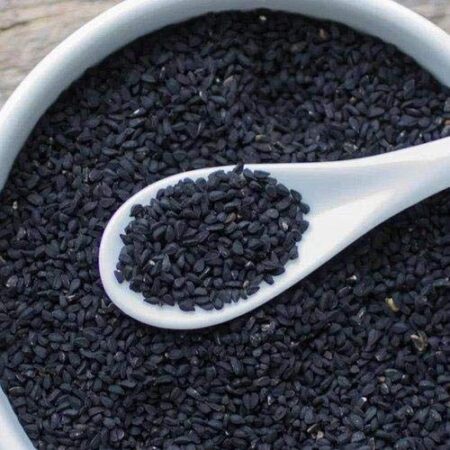
Kalonji
Kalonji, also known as Nigella sativa or black seed, refers to the small, black, angular seeds obtained from the flowering plant of the same name. Kalonji seeds come from the Nigella sativa plant, a member of the buttercup family. Kalonji has a slightly bitter and peppery taste with a hint of onion-like flavour. The seeds are often used as a spice in various cuisines.

